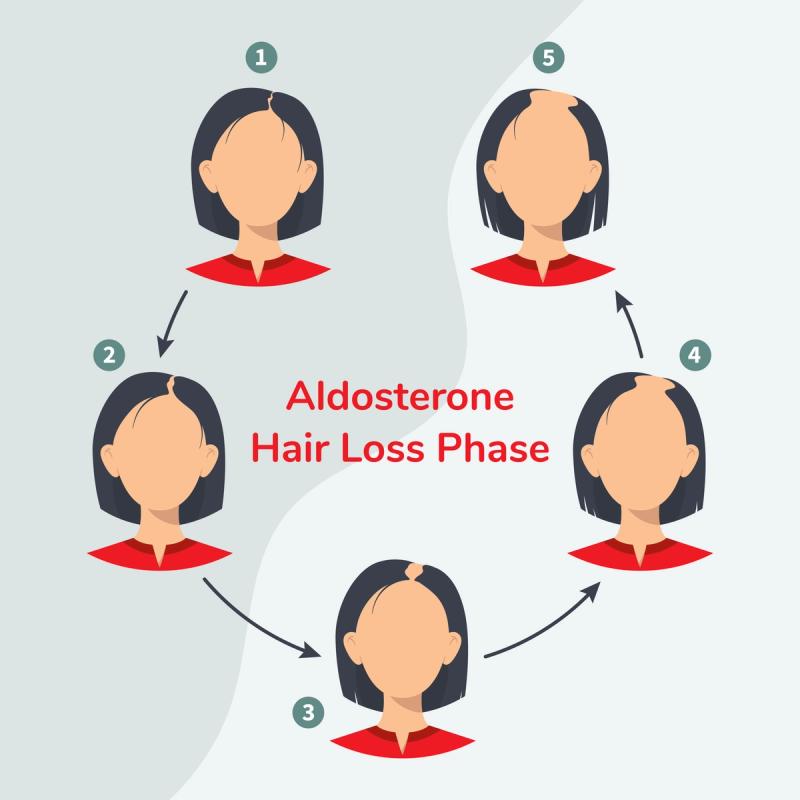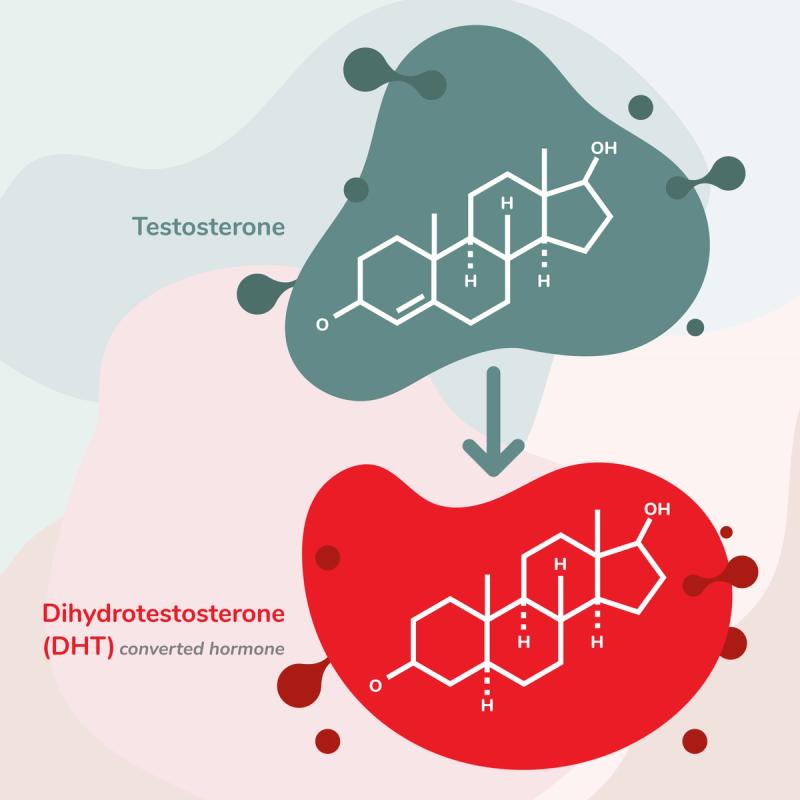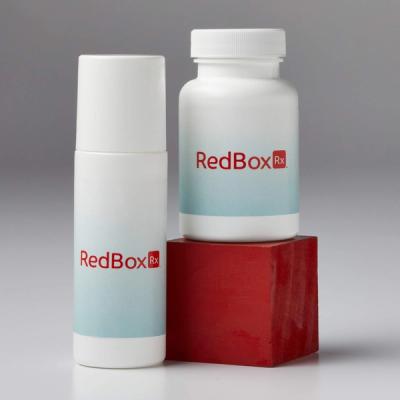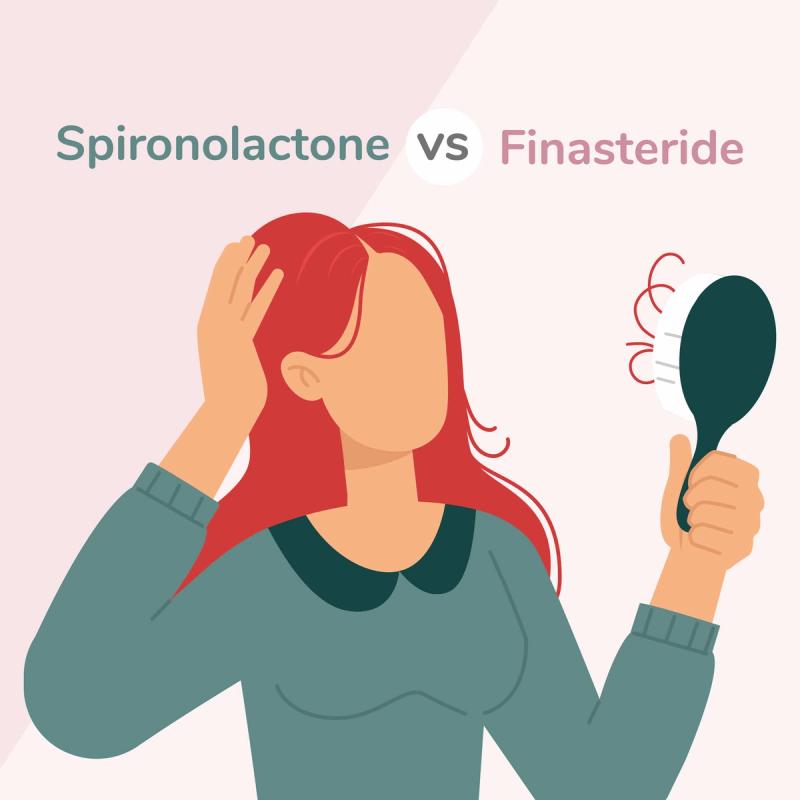Male pattern hair loss (MPHL) affects more than 50% of men in their 40s1, and female pattern hair loss (FPHL) affects approximately 40% of women by age 502, making it a prevalent concern. There are two popular oral medications to consider regarding hair loss: spironolactone and finasteride. While they share the same goal of combating hair loss, the two medications vary in effectiveness and suitability by sex.
Learn more about the characteristics, effectiveness, and potential side effects of spironolactone and finasteride so that you, along with your licensed medical provider, can make a confident and educated decision on how to treat hair loss.
Key Takeaways
Spironolactone lowers androgen activity and is usually prescribed for women who have hormone related thinning. It is taken once daily and many users notice less shedding in three to six months.
Finasteride (Propecia®) lowers the hormone that shrinks hair follicles in men. A small daily pill is widely used for male pattern hair loss and can slow shedding and start regrowth within six to 12 months.
Spironolactone is not recommended for men because it may lower testosterone. Women who take it need reliable birth control because the medicine can harm a developing male fetus.
Finasteride is not approved for use in women because it can interfere with hormone balance and carries safety risks, especially in pregnancy.
What is spironolactone?

Spironolactone (generic Aldactone®) is a synthetic aldosterone receptor antagonist that can stimulate hair growth.3 Aldosterone is a naturally occurring hormone and when the body produces too much (hyperaldosteronism), it can lead to hair loss.4
Spironolactone is commonly prescribed for women experiencing hair loss, as other oral hair loss medications are not approved for use in women. Finasteride, for example, is not approved for use by women due to the potential for fetal abnormalities5 including a high risk of birth defects.
In a study from the Journal of the American Academy of Dermatology, 74.3% of participants who experienced female pattern hair loss reported stabilization or improvement of their condition with the use of spironolactone.6
Studies have also shown spironolactone to be effective in treating acne. Users have reported a reduction in acne of anywhere from 50% to 100%.7
The recommended dosage for spironolactone to treat hair loss in women is 100 mg to 400 mg per day, as advised by your medical provider.8
What is finasteride?

Finasteride (generic Propecia®) is an oral prescription medication primarily used to treat male pattern baldness. Like spironolactone, finasteride treats androgenetic alopecia or hair loss caused by too much of the androgen hormone in the body. It works by blocking the conversion of testosterone into DHT, the androgen responsible for male pattern hair loss.9
Finasteride is also prescribed to treat the symptoms of a prostate condition called benign prostatic hyperplasia (BPH).
Common dosing for finasteride to treat male pattern baldness is 1 mg per day.10
Finasteride is not FDA-approved for use by women and is forbidden in pregnant women due to a high risk of birth defects.11

Hair Loss Medications for Less
RedBox Rx offers convenient online doctor consultations with hair loss prescriptions starting at $10/month. Get fast, free shipping on meds to your door.
Get Started for FreeWhat’s the difference between spironolactone and finasteride?
Spironolactone and finasteride are oral medications commonly prescribed for hair loss or androgenetic alopecia. Both medications interact with androgen hormones in the body to prevent or stop hair loss, but they affect hormones differently. This is why it is recommended that only women take spironolactone and only males take finasteride.
For women, studies have shown that the best results are achieved when taking spironolactone for at least six months.12 Men can also expect noticeable results from finasteride in about six months.13
Spironolactone vs. Finasteride Comparison

What are the side effects of spironolactone and finasteride?
Possible side effects of spironolactone for women include:14
Heartburn
Sexual dysfunction
Leg cramps
Sores, welts, or blisters
Stomach upset
Swelling of the breasts or breast soreness
Fatigue
Constipation
Dizziness or faintness
Possible side effects of finasteride for men include:15
Sexual dysfunction and decreased desire
Pain in the testicles
Depression
Talk to your provider about how to deal with or minimize any unpleasant side effects of spironolactone and finasteride.
Can spironolactone or finasteride be used with minoxidil?
Minoxidil16(Rogaine®) is a medication used to prevent hair loss. It is the only topical hair loss treatment approved for both men and women.17 RedBox Rx offers 5% minoxidil foam.
With continued use, minoxidil has been proven to help stimulate hair growth in users. It works by shortening the resting phase of hair follicle growth and encouraging follicles to move into a lengthened growing, or anagen, phase.18
Topical minoxidil is safe to use concurrently with oral treatments such as spironolactone or finasteride. Combining minoxidil with spironolactone19 or finasteride20 has proven more effective than any of the medications used alone.
Finasteride and spironolactone help encourage the regrowth of hair follicles on the scalp. Minoxidi helps slow or stop hair loss at the source. The different applications and functions of the medications make them complementary.
Is spironolactone or finasteride available over-the-counter?
Both spironolactone21 and finasteride22 require a prescription and are not available over-the-counter. You can get a prescription for either spironolactone or finasteride online, however, at telehealth providers like RedBox Rx.
As mentioned previously, spironolactone is approved for use in women, while finasteride is approved only for use in men.
How RedBox Rx can help

RedBox Rx makes receiving medication treatment for hair loss easy and affordable.
Benefits of RedBox Rx include:
Transparent, affordable, flat rates for hair loss prescriptions starting at $10/month.
FREE consultations with a U.S. licensed medical provider.
No insurance required. FSA and HSA eligible.
FREE shipping directly to you. Monthly and quarterly subscription options available.
Get started on your hair loss treatment journey with our short online assessment for men’s hair loss or women’s hair loss.


